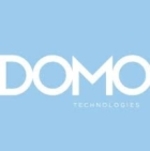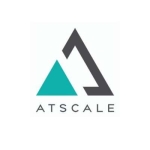What is most valuable?
If I were to compare it with Power BI and I wanted to build proper well-formatted reports, BusinessObjects Business Intelligence does that much better. Power BI is just getting into that space. They've concentrated more on visualization, which is what the SAP Lumira does. With Web Intelligence, you are able to build reports that users can interact with. They can also do a lot of querying themselves.
It is robust in terms of security and integration. It is also quite scalable.
What needs improvement?
I don't like the fact that I have to use two tools. Web Intelligence is good for reporting and all kinds of stuff, but I would rather have one product. All the reporting features of Web Intelligence should be developed within Lumira.
A lot of predictive abilities have been brought into the cloud version of SAP Analytics. It would be nice to see a lot of newer technologies and AI. Predictive capabilities are becoming a little more standard. Instead of having to get another model, we are just looking for one solution to deal with analytics including predictive.
For how long have I used the solution?
My first engagement with SAP BI was in 1998, so it has been more than 20 years.
What do I think about the stability of the solution?
Its environment is quite robust, especially when it is on-premise.
What do I think about the scalability of the solution?
SAP BI is quite scalable. It supports multiple servers and multiple combinations of landscapes. It is quite good. You can add more servers to get better performance. You can also separate services. You can separate the application server from the webserver. If you want to deploy a large on-premise setup, it would be the way to go.
How are customer service and technical support?
I work for an SAP partner company. We were the first SAP BusinessObjects partners in Nigeria, which is where I'm based. We've been partners since '98. Our goal as consultants is to be as self-sufficient as possible. We hardly need to get in touch with tech support because we are self-sufficient.
How was the initial setup?
The installation of SAP BI is an extensive function. Typically with an SAP installation, you need a combination of on-premise and cloud. The cloud functionality is still evolving and maturing. As compared to Power BI, it would take a lot more work. However, if I went the way of Lumira, I could use Lumira Desktop standalone, and I get to use the features.
What about the implementation team?
We have our own team for maintenance within our company. We used to have five people, but we have scaled down to just two full-time employees. We also have a number of people who are available on request.
What's my experience with pricing, setup cost, and licensing?
I have always found SAP BI to be expensive. It is expensive even when you compare SAP BI Cloud with Microsoft Power BI. Power BI is probably around $9.99 per month, and the cheapest SAP BI is around $20, which is double. In terms of price, Power BI is definitely a lot better. If you have budget issues, you may want to go for Power BI.
What other advice do I have?
I will be a bit biased, and I would definitely recommend SAP BI. It is a bit more robust and mature as compared to Power BI. Power BI keeps changing every day, which is not a bad thing considering how old it is. For a serious setup, I would rather use SAP BI, but I look forward to having one tool rather than two.
I would rate SAP BusinessObjects Business Intelligence Platform an eight out of ten.
Which deployment model are you using for this solution?
On-premises
Disclosure: My company has a business relationship with this vendor other than being a customer: Partner

















An upgrade in SAP BO is a hard, resource consuming job. Dont underestimate it.